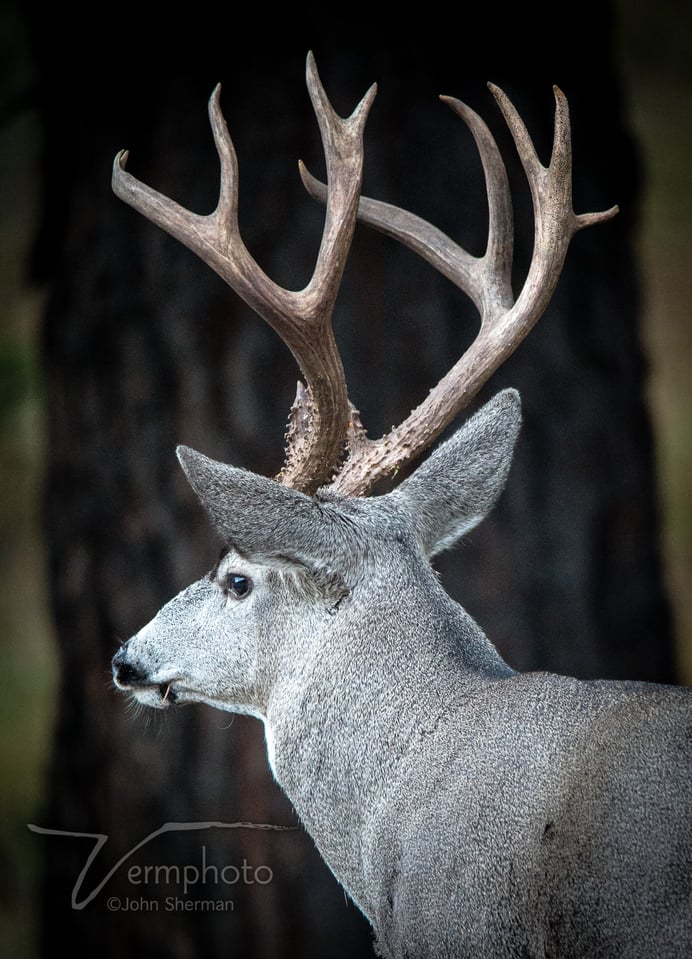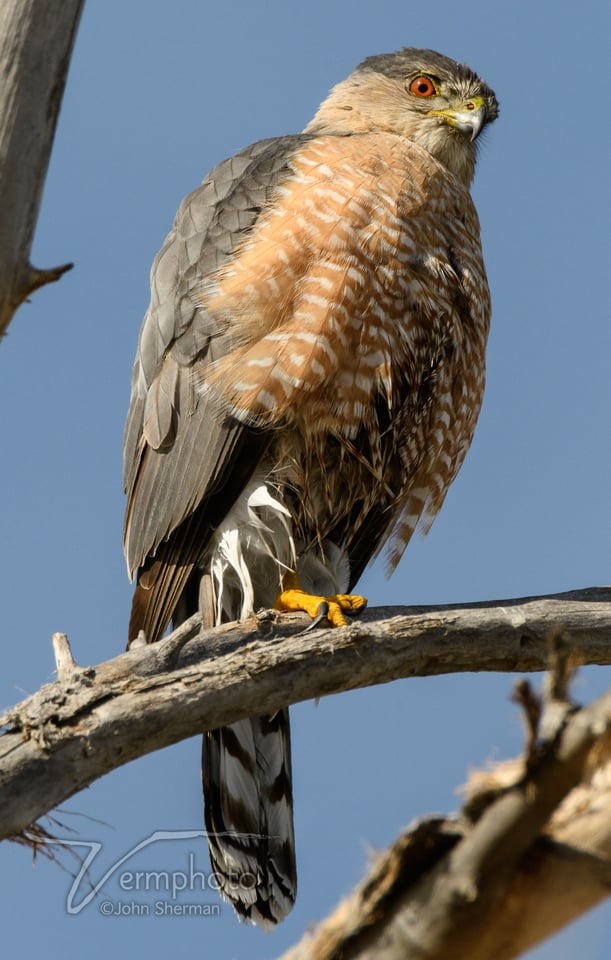Sharpness
Below are a host of images shot at different distances, apertures and focal lengths. My opinion is that such practical field testing is of greater value than how well a lens focuses on a flat target at a fixed distance, especially when the lens will primarily be used for sports and wildlife, subjects that aren’t flat and vary greatly in distance from the camera. Nevertheless, I hope Nasim gets a few copies to bench test and can add Imatest data to this review in the future. If you value lab data over real world results, skip this article and roll over to DXOMark and see how bad the one copy they tested did then spend ten times as much on a sharper, but less versatile prime. While you’re out there you may also wish to check out this article by Lens Rentals Roger Cicala about bench testing zooms. Okay, lets get out of the lab and back to the real world.
The G1 had a reputation of being a tad soft at 600mm, especially wide open (though my copy seemed fine at 600mm). The G2 shows much improvement at the long end. The shot below is at 600mm and wide open:

And this Roadrunner was shot at f/7.1, nearly wide open and at about 10 feet away:

Are those real eyelashes?
Stopping further down to f/8 this Common Moorhen is looking sharp:

I didn’t have a lens chart handy so I got the next best thing – a Black-crowned Night Heron. Primarily a nocturnal hunter, they have a tendency to hold real still throughout the day. Here’s a sequence at 600mm stopping down from wide open to f/22. These are at 100% and shot with a D500 that has a tighter pixel pitch than a D810.
All lenses suffer from diffraction. With the G2 at 600mm, it looks good to f/14, some diffraction kicks in at f/16 – 18 (nothing some added sharpening in post can’t improve), and gets pretty ugly at f/20 or smaller.
And some samples at shorter focal lengths:





And at 150mm the results are scary:

Wildlife photography takes me to many beautiful locales and I’m a fan of using telephoto compression in my landscape shots. Also I like to feature shots of wildlife in their environment. With both the aforementioned styles, corner sharpness is very desirable. This is where the G1 shined compared to the copies of the Nikon 200-500mm VR and Sigma 150-600mm Contemporary zooms I tested before. The G2 also does fine from corner to corner, especially when stopped down around f/9-f/11. This is a generalization and varies with focal length, the corners of the copy I tested being softer wide open at the long end.





If you are still curious about resolution charts, here is the MTF chart for the lens:

Lens Construction
And here is the optical design of the lens:

Bokeh Performance
Bokeh is an objective characteristic and subject to individual taste. Below are some examples to make your own mind up. Often the G2 bokeh is quite smooth.



With small specular highlights in the background there can be some slight donut edges as seen below:

It doesn’t bother me much in that shot unless I put my readers on and really squint. However, in the shot below the highlight off the eye of the mallard drake in the background looks a bit creepy.

With specular highlights in the foreground the edges are more uniform.

Ghosting and Flare
With all those elements inside, even eBAND coating can’t knock off all the ghosting and flare if you shoot with the lens hood off. Put the hood on and things look crisp, as expected:


Autofocus Performance and Accuracy
Tamron claims the G2 focuses faster than the G1, but in my field tests they seem to be the same. If the G2 is faster, it was imperceptible to me. But this isn’t a bad thing as the G1 was reasonably fast in the first place and noticeably faster than the Nikkor 200-500mm. After I got used to the lens, the biggest problem I had was with bumping the focus limiter switch by mistake.
The AF motor is as quiet as the Silent Wave Motor on the Nikkor 70-200mm f/4.

I had a few instances where the focus got stuck at the close end and/or jumped back and forth incessantly like the lens was possessed. This happened maybe 3-4 times in as many months and is not something I’ve been able to duplicate, hence I can’t totally rule out user error or a problem on the camera’s end. Given my shaky experience with the G1’s AF issues, this gives me some cause for concern. I’ve contacted Tamron about this and will likely send the lens in to get it checked out. Tamron is very good about their three-day turnaround (plus shipping time) on repairs.
Vibration Control / Image Stabilization Performance
The G2 has three Vibration Control modes. Mode 1 maximizes the stability of the viewfinder image allowing easier acquisition and framing of your subject. Mode 2 is for panning in a straight line. Mode 3 only kicks in the VC when the shutter is released, giving the maximum amount of stabilization to the shot, but at the cost of a shaky viewfinder view.
I shot mostly in Mode 1 and was impressed by the results. I got 3 – 3.5 stops of image stabilization, shooting at 600mm and down to 1/125 sec with acceptable results over 80% of the time. At 1/60 sec this went down to 60% with slight blurring 40% of the time. At 1/30 sec I was down to 20% success, and below that zero percent.

In Mode 3 the viewfinder image at 600mm is quite shaky, making it hard to compose and accurately position a focus point. Nevertheless, the results were superior to Mode 1 with over 80% success down to 1/30 sec at 600mm, 60% at 1/15 sec, and 20% at 1/8 sec. 1/30 at 600mm is 5 1/3 stops below the 1/focal length standard – impressive, especially as I didn’t even have a drink to steady my hands. I think Mode 3 makes the most sense in three cases; for landscape style images at the shorter focal length settings, working off of a beanbag or flimsy tripod, and for small subjects that will require cropping, hence precise composition is unnecessary. In the last case one may want to focus in Mode 1 first, lock the focus, then switch to Mode 3 assuming the subject doesn’t change distance.
I won’t bore you with the newsprint photos. Instead, here’s a practical example:

This was before sunrise, shooting wide open at ISO 12800 and all I could muster was 1/50 sec for a shutter speed.

This was at 1/20th sec, 5.5 stops under the 1/focal length standard. The owl is sharp (other than twitching “ear tufts”). Mode 3 at work. I had to take multiple frames to get one this sharp; even then the photo is boring, but it does illustrate the point. The VC worked well.
I used Mode 2 for birds in-flight action.
Photographing Birds in Flight
The G2’s relatively light weight makes for easy hand-holding and panning. Acquiring focus was occasionally tricky, but no more so than with most zoom lenses. When I could gain focus it tracked well.

Sandhill Cranes are easy subjects – slow, direct fliers. Predictably, the G2 had no problem with the cranes.

Northern Harriers are erratic fliers and a tougher bird in flight subject. Despite that, I had pretty good luck with the G2.
Dedicated 1.4x Teleconverter
Common knowledge has it that pairing a teleconverter with a zoom lens is a recipe for marshmallow soft images. For instance, pair the Nikon 1.4x with the Nikkor 80-400mm zoom and in my experience the results are worse than simply cropping in. Tamron however, has apparently designed this 1.4x TC to pair specifically with the 150-600mm and if used with best practices, the results are mindbogglingly sharp. How sharp? Check this out:

And at 100%:

Wide open at f/9 results are so-so with the 1.4x TC attached:

But stopped down to f/10 they dramatically improve:

and at 100% for your pixel-peeping pleasure:

Below is a Cottontail at 100 percent and various apertures. The lens was braced on a beanbag:
With the 1.4x TC attached, the maximum aperture drops to f/9 at full zoom, beyond the rated ability of most AF systems. However, the G2 with 1.4x did autofocus on the three bodies I tested it with (D810, D500, D4s). In dim light, it had trouble and was slow, but in bright light, it did just fine if I used the AF points near the center.
Manual focus is tough in dim conditions due to a dark viewfinder image from so little light coming through the lens.
If you’re shooting a full frame camera and need more than 600mm of reach your best bet is to switch to a crop sensor body instead of a teleconverter. You’ll get the extra reach but retain a higher wide-open aperture and less image degradation.

Photographed with the 1.4x TC, this night heron looks pretty good to me but how does it stack up against the Nikkor 800mm f/5.6 VR prime?

No surprise here, the $18K prime kicks the zoom + TC’s butt. It focuses much faster, is decidedly sharper, displays better contrast and has a 1 1/3rd stop wider maximum aperture. But is all that worth 16 grand more? If you have $16K just kicking around in the sofa cushions, sure. But for most final outputs I’d say the economics aren’t justified. I wouldn’t hesitate to send G2 + TC shots to the magazine editors I work with. This is assuming they are the sharp G2 + TC shots. As stated above, you need to work with best practices or your hit rate with this combo will be low. I recommend a tripod or a very high shutter speed with this combo.
Of note is that 600mm times 1.4 equals 840mm (though it lists as 850mm in your metadata) but my shots at full zoom gave nearly identical image size as my 800mm prime shots. In fact, maybe even a tad shorter, like 780mm. As with the G1, Nikon 200-500mm and Sigma 150-600mm Contemporary, the G2 has noticeable focus breathing.
If you need even more reach go with the teleconverter plus a crop body for results like this:

This is handheld and at 100%. Not bad for 1260mm equivalent (before cropping) at 1/400th sec. This is sharp enough for Facebook, Instagram, etc., but nothing I’d submit to a publisher. If we don’t crop so tight we can do pretty good like with this Cooper’s Hawk:

And when properly supported (in this case resting atop a pack as I lay on the ground) such as in the 1:1 rabbit shots above, the results can be pretty darn good.
Lens Comparisons
Please refer to my Tamron G1 vs Nikkor 200-500mm vs Sigma Contemporary 150-600mm lens comparison. In that article, you will see that the G1 I tested bested the copies of Nikkor and Sigma as far as overall sharpness goes, especially corner-to-corner. Bear in mind I only had single copies of the Nikkor and Sigma to test, so sample variation definitely comes into play. If you got a superior copy of the Nikkor or Sigma, bravo! That said, the G2 copy I tested is a superior lens optically and mechanically to the G1, which I found to be better optically (though not AF-wise) to the Nikkor and Sigma. As well the G2 has desirable features not found on the Nikkor or Sigma, such as full weather sealing, Arca-Swiss tripod foot, and fluorine and nano-coatings.

In fantasyland I wish Tamron and Nikon could join forces – Tamron’s optics and vibration control combined with Nikon’s reliable autofocus. Currently at B&H, the Tamron G1 is marked down to $869 (Nikon mount, Canon mount). The Sigma Contemporary 150-600mm is $989. And the Nikkor 200-500mm is $1397. Compared to all these, the Tamron 150-600mm G2 is $1399.
Sigma also offers the Sigma Sport 150-600mm, currently selling for $1999. The price is hefty and so is the lens. It has a reputation for great sharpness and a sturdy build, but is so heavy that it is hard to handhold, hence in a different league than the lenses mentioned above.
And who can forget the legendary Sigma 200-500mm f/2.8? Have fun handholding this 34-pound beast. But at $25,999 MSRP, at least your wallet will be lighter and to be fair, it does come with it’s own matched 2x teleconverter.
Tamron SP 150-600mm f/5-6.3 Di VC USD G2
- Optical Performance
- Features
- Bokeh Quality
- Build Quality
- Focus Speed and Accuracy
- Handling
- Image Stabilization
- Size and Weight
- Value
Photography Life Overall Rating

Table of Contents







